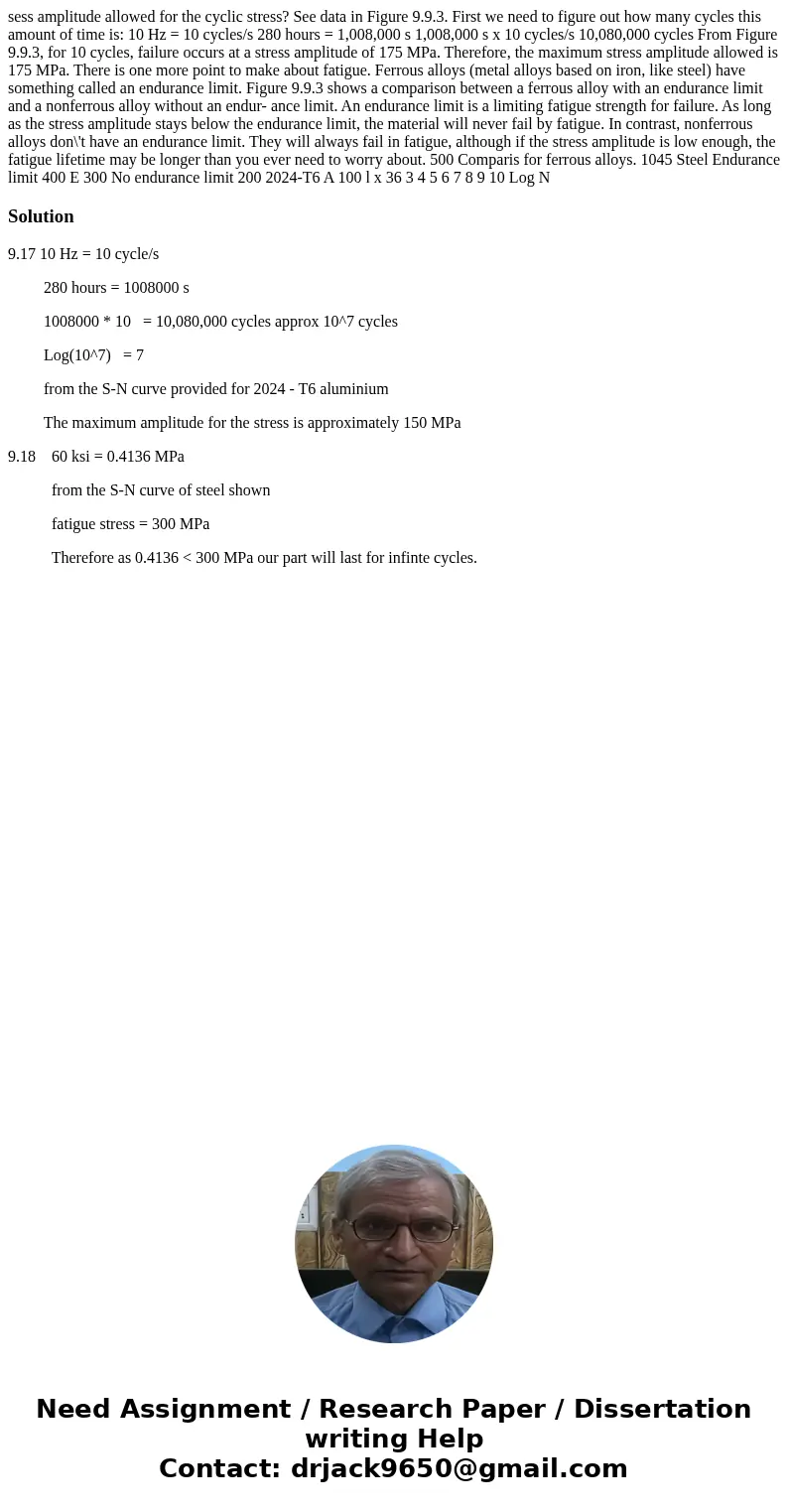sess amplitude allowed for the cyclic stress See data in Fig
sess amplitude allowed for the cyclic stress? See data in Figure 9.9.3. First we need to figure out how many cycles this amount of time is: 10 Hz = 10 cycles/s 280 hours = 1,008,000 s 1,008,000 s x 10 cycles/s 10,080,000 cycles From Figure 9.9.3, for 10 cycles, failure occurs at a stress amplitude of 175 MPa. Therefore, the maximum stress amplitude allowed is 175 MPa. There is one more point to make about fatigue. Ferrous alloys (metal alloys based on iron, like steel) have something called an endurance limit. Figure 9.9.3 shows a comparison between a ferrous alloy with an endurance limit and a nonferrous alloy without an endur- ance limit. An endurance limit is a limiting fatigue strength for failure. As long as the stress amplitude stays below the endurance limit, the material will never fail by fatigue. In contrast, nonferrous alloys don\'t have an endurance limit. They will always fail in fatigue, although if the stress amplitude is low enough, the fatigue lifetime may be longer than you ever need to worry about. 500 Comparis for ferrous alloys. 1045 Steel Endurance limit 400 E 300 No endurance limit 200 2024-T6 A 100 l x 36 3 4 5 6 7 8 9 10 Log N 
Solution
9.17 10 Hz = 10 cycle/s
280 hours = 1008000 s
1008000 * 10 = 10,080,000 cycles approx 10^7 cycles
Log(10^7) = 7
from the S-N curve provided for 2024 - T6 aluminium
The maximum amplitude for the stress is approximately 150 MPa
9.18 60 ksi = 0.4136 MPa
from the S-N curve of steel shown
fatigue stress = 300 MPa
Therefore as 0.4136 < 300 MPa our part will last for infinte cycles.

 Homework Sourse
Homework Sourse